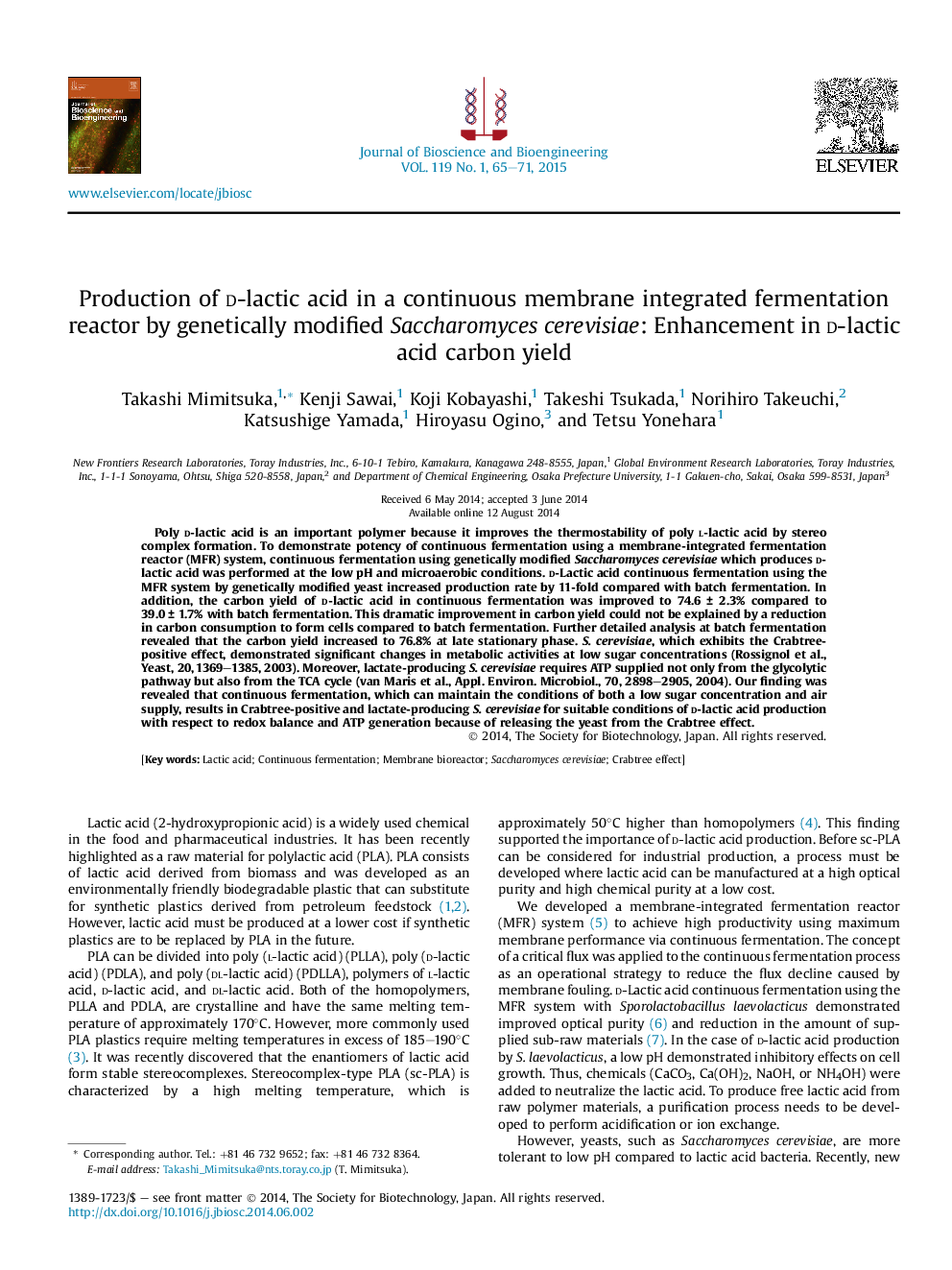| کد مقاله | کد نشریه | سال انتشار | مقاله انگلیسی | نسخه تمام متن |
|---|---|---|---|---|
| 20308 | 43168 | 2015 | 7 صفحه PDF | دانلود رایگان |

• Continuous culture by lactate-producing yeast increased lactate yield.
• d-Lactic acid carbon yield increased at a later phase of the batch culture.
• Continuous culture keeps the culture condition at the batch’s late stationary phase.
• Continuous air supply during fermentation maintains a stable cytosolic redox balance.
• Continuous fermentation releases S. cerevisiae from the Crabtree effect.
Poly d-lactic acid is an important polymer because it improves the thermostability of poly l-lactic acid by stereo complex formation. To demonstrate potency of continuous fermentation using a membrane-integrated fermentation reactor (MFR) system, continuous fermentation using genetically modified Saccharomyces cerevisiae which produces d-lactic acid was performed at the low pH and microaerobic conditions. d-Lactic acid continuous fermentation using the MFR system by genetically modified yeast increased production rate by 11-fold compared with batch fermentation. In addition, the carbon yield of d-lactic acid in continuous fermentation was improved to 74.6 ± 2.3% compared to 39.0 ± 1.7% with batch fermentation. This dramatic improvement in carbon yield could not be explained by a reduction in carbon consumption to form cells compared to batch fermentation. Further detailed analysis at batch fermentation revealed that the carbon yield increased to 76.8% at late stationary phase. S. cerevisiae, which exhibits the Crabtree-positive effect, demonstrated significant changes in metabolic activities at low sugar concentrations (Rossignol et al., Yeast, 20, 1369–1385, 2003). Moreover, lactate-producing S. cerevisiae requires ATP supplied not only from the glycolytic pathway but also from the TCA cycle (van Maris et al., Appl. Environ. Microbiol., 70, 2898–2905, 2004). Our finding was revealed that continuous fermentation, which can maintain the conditions of both a low sugar concentration and air supply, results in Crabtree-positive and lactate-producing S. cerevisiae for suitable conditions of d-lactic acid production with respect to redox balance and ATP generation because of releasing the yeast from the Crabtree effect.
Journal: Journal of Bioscience and Bioengineering - Volume 119, Issue 1, January 2015, Pages 65–71